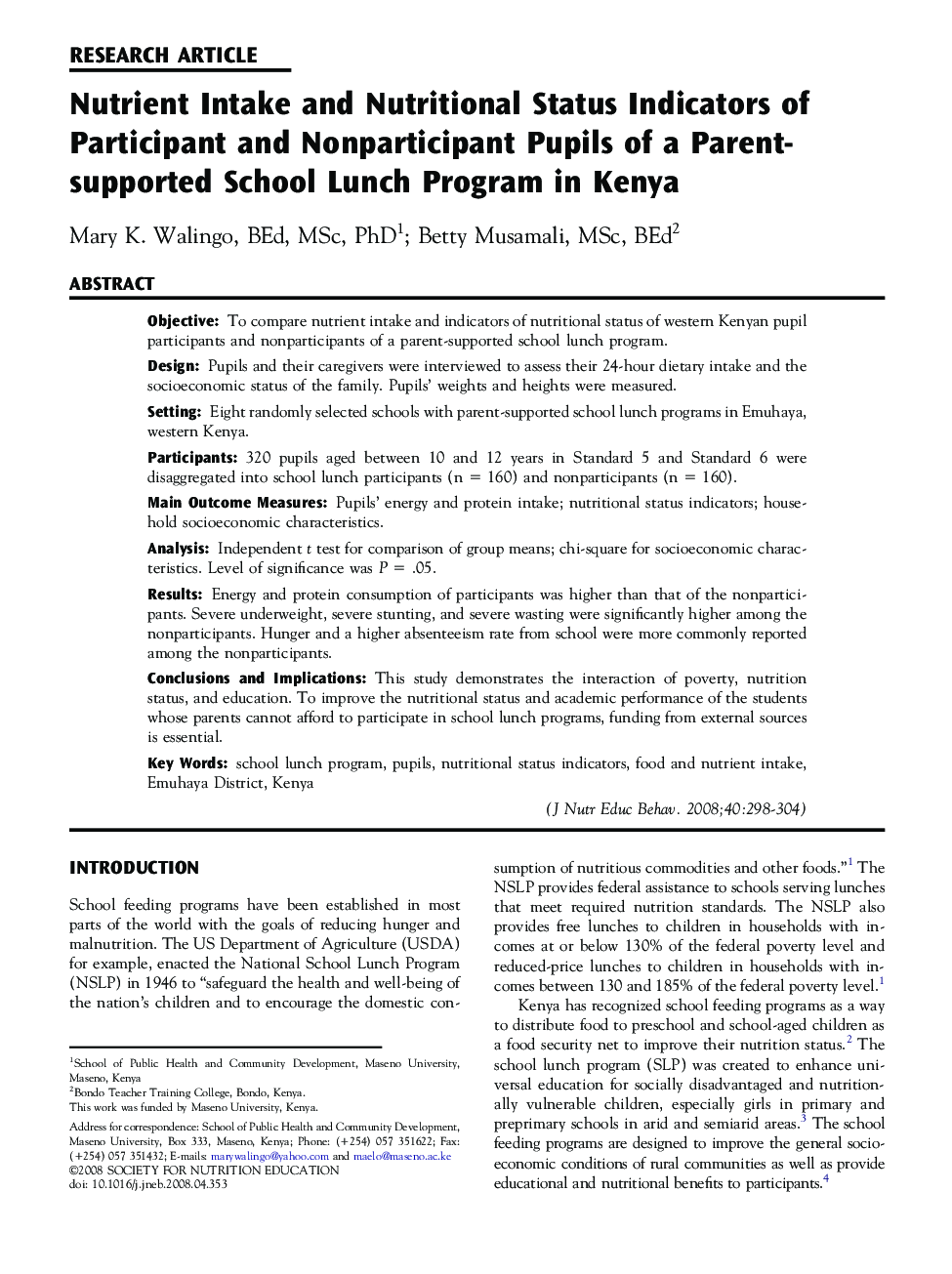| Article ID | Journal | Published Year | Pages | File Type |
|---|---|---|---|---|
| 363248 | Journal of Nutrition Education and Behavior | 2008 | 7 Pages |
ObjectiveTo compare nutrient intake and indicators of nutritional status of western Kenyan pupil participants and nonparticipants of a parent-supported school lunch program.DesignPupils and their caregivers were interviewed to assess their 24-hour dietary intake and the socioeconomic status of the family. Pupils' weights and heights were measured.SettingEight randomly selected schools with parent-supported school lunch programs in Emuhaya, western Kenya.Participants320 pupils aged between 10 and 12 years in Standard 5 and Standard 6 were disaggregated into school lunch participants (n = 160) and nonparticipants (n = 160).Main Outcome MeasuresPupils' energy and protein intake; nutritional status indicators; household socioeconomic characteristics.AnalysisIndependent t test for comparison of group means; chi-square for socioeconomic characteristics. Level of significance was P = .05.ResultsEnergy and protein consumption of participants was higher than that of the nonparticipants. Severe underweight, severe stunting, and severe wasting were significantly higher among the nonparticipants. Hunger and a higher absenteeism rate from school were more commonly reported among the nonparticipants.Conclusions and ImplicationsThis study demonstrates the interaction of poverty, nutrition status, and education. To improve the nutritional status and academic performance of the students whose parents cannot afford to participate in school lunch programs, funding from external sources is essential.
